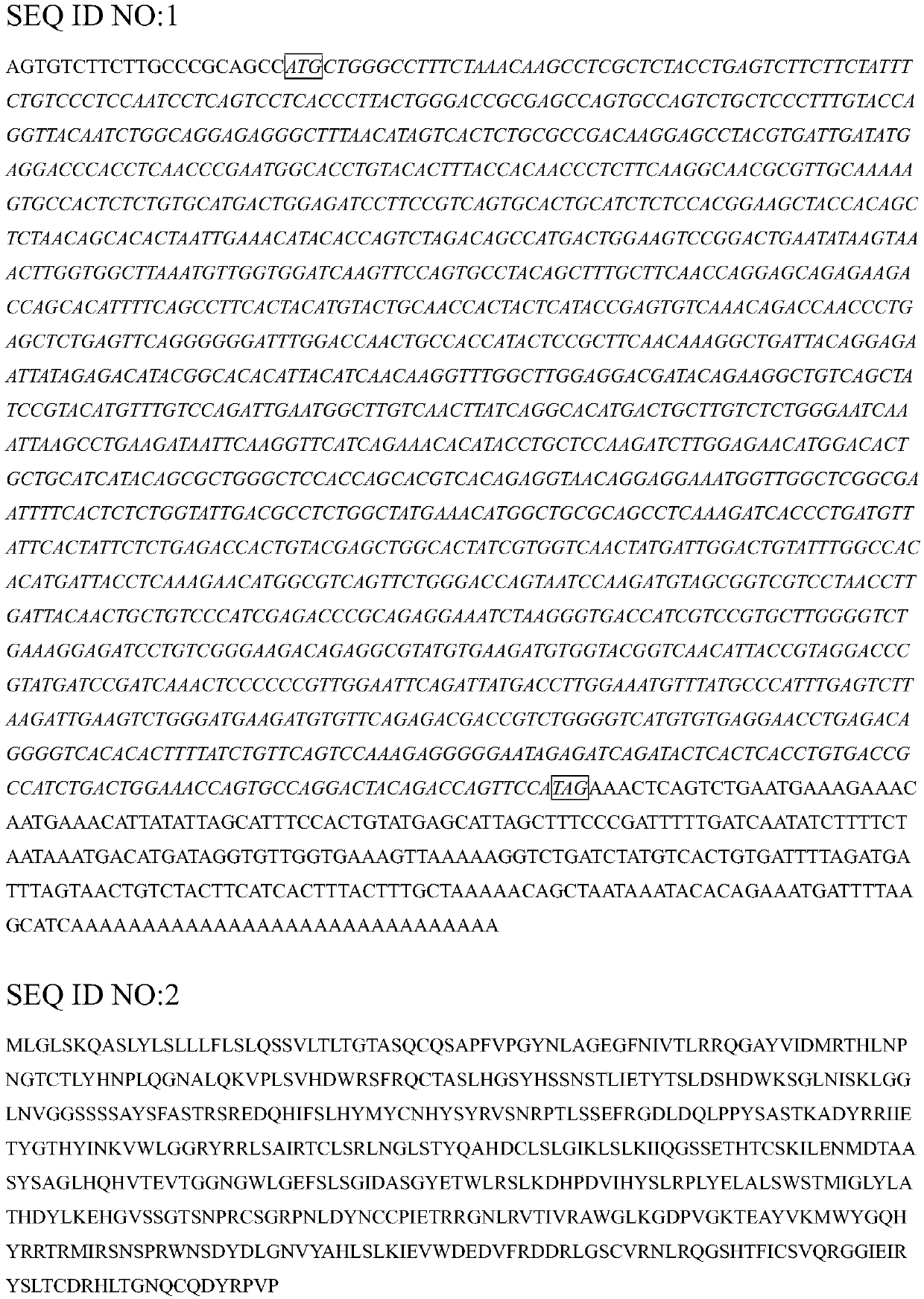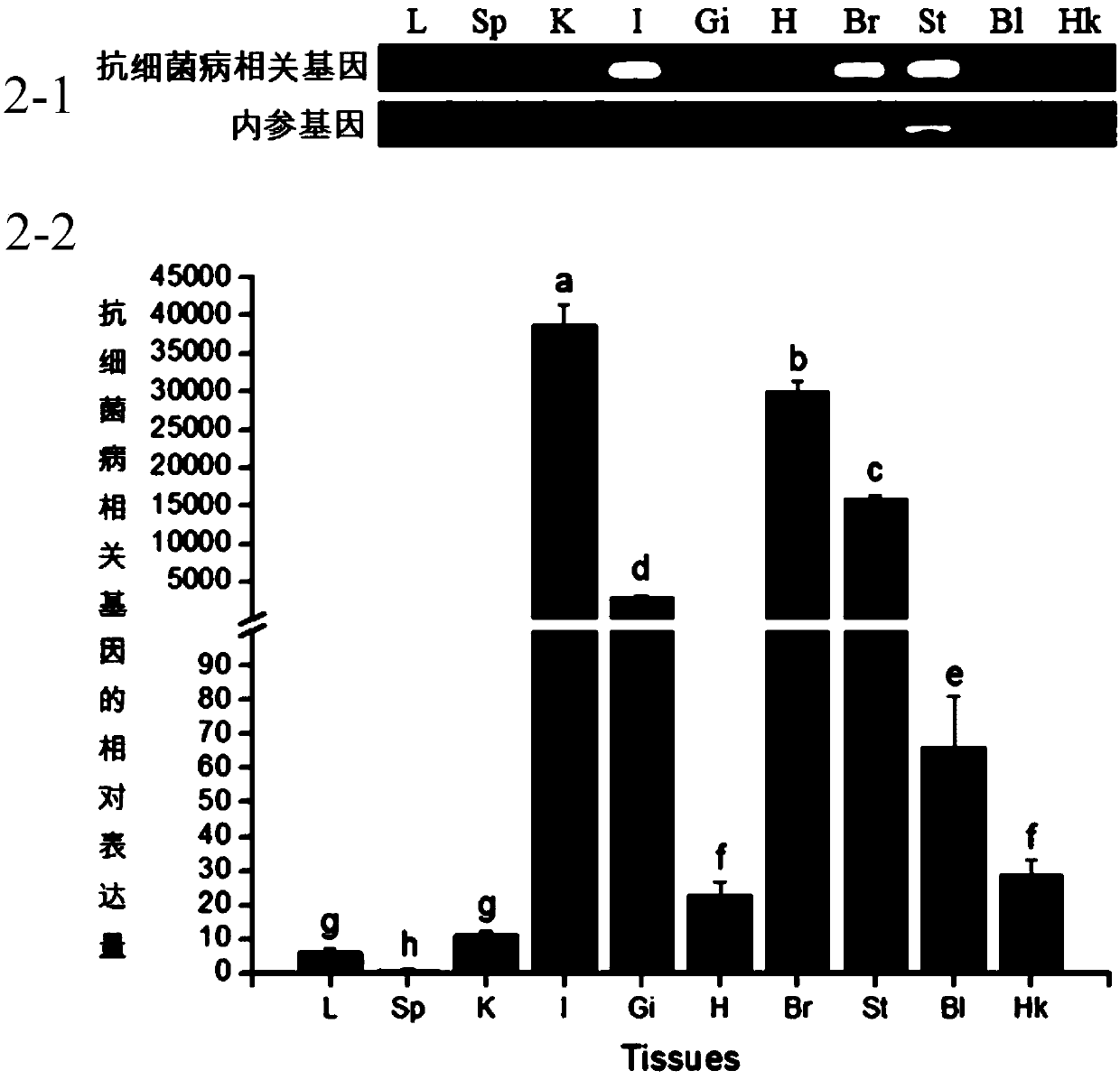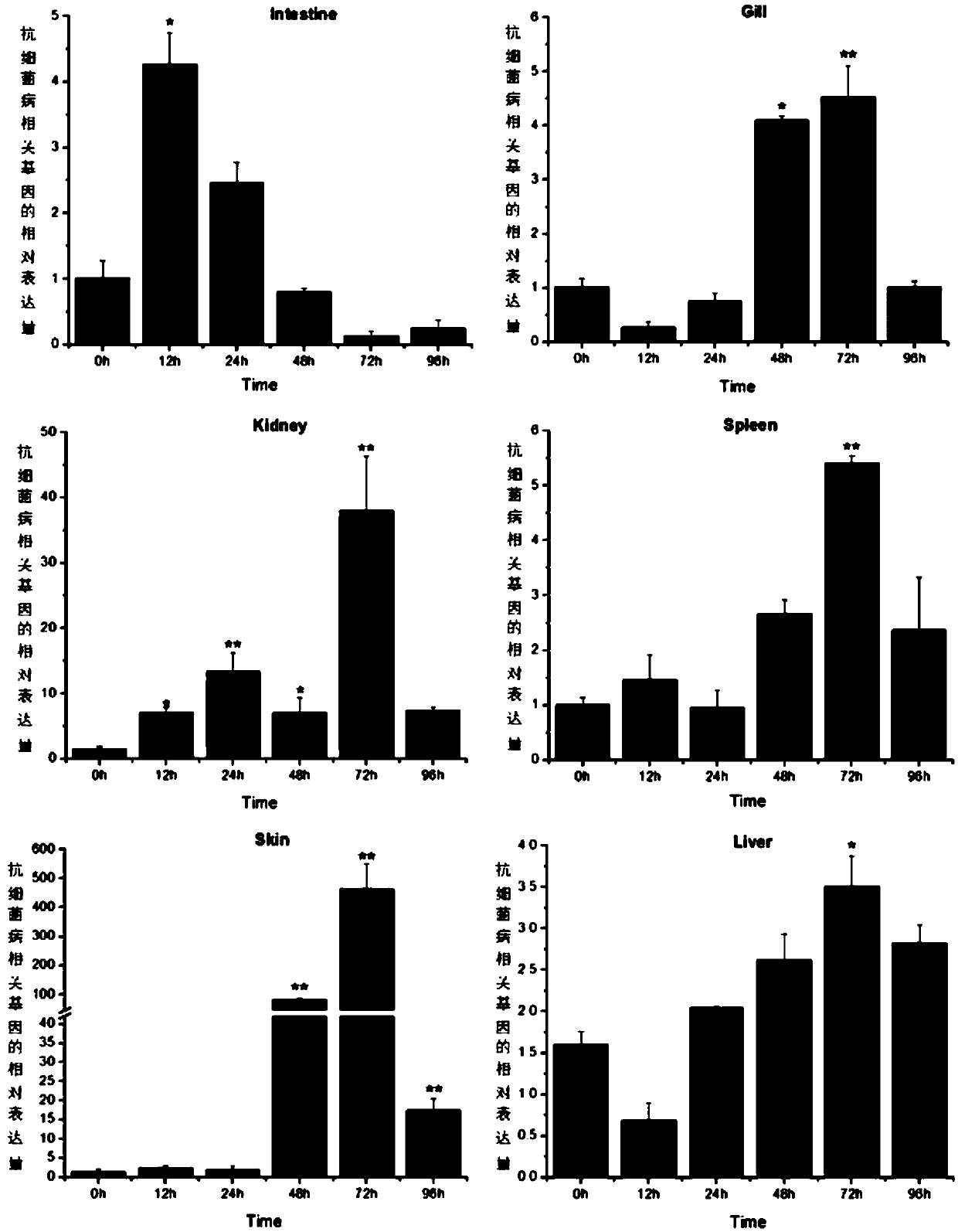Cynoglossus semilaevis bacterial disease resistance related gene and application method thereof
A semi-smooth tongue sole, anti-bacterial technology, applied in the direction of anti-bacterial drugs, applications, genetic engineering, etc., can solve the difficult problem of semi-smooth tongue sole's ability to resist bacterial diseases, and achieve the effect of inhibiting proliferation
- Summary
- Abstract
- Description
- Claims
- Application Information
AI Technical Summary
Problems solved by technology
Method used
Image
Examples
Embodiment 1
[0040] Example 1: Cloning and sequence analysis of the full-length cDNA of the anti-bacterial disease-related gene of half-smooth tongue sole
[0041] The applicant Chen Songlin et al. first used conventional methods to carry out whole-genome resequencing and genome-wide association (GWAS) analysis on the previously screened semi-smooth tongue sole resistant to Harvey's vibrio disease families and susceptible families, and found that the half-smooth tongue sole is resistant to Harvey's vibrio disease. SNP markers linked to mycosis traits, and further locate the SNP site to a fragment, and then verify the fragment by RT-PCR and RACE-PCR amplification, and obtain the full-length cDNA sequence of the gene.
[0042] (1) Experimental method: RNA extraction by Trizol method, synthesis of cDNA, PCR amplification
[0043] RNA extraction by Trizol method: Take about 100 mg of tissue pieces, put them into an enzyme-free centrifuge tube with 500 μL Trizol reagent, and grind on ice with a...
Embodiment 2
[0057] Example 2: Analysis of expression levels of anti-bacterial disease-related genes in tongue sole in different tissues of normal fish
[0058] (1) Design quantitative primers and verify the specificity of primers
[0059] Design primers for the quantitative amplification of the target gene according to the anti-bacterial disease-related gene sequence, carry out ordinary PCR amplification, electrophoresis detection, and clone sequencing. Determine that the primer is specific; in addition, perform fluorescent quantitative PCR on the machine to observe the peak pattern, CT value and amplification efficiency. If the fluorescent quantitative PCR finds that the peak pattern is single, and the amplification efficiency of the internal reference gene and the target gene are almost identical, it proves that the primer Specific, can be used for real-time quantitative PCR experiments. The quantitative primers for the Actin gene were derived from published articles by Chen Songlin's ...
Embodiment 3
[0068] Example 3: Relative expression analysis of anti-bacterial disease-related genes of tongue sole in half-smooth tongue sole in immune-related tissues after infection with Vibrio harveyi
[0069] Using the Vibrio harveyii preserved in Chen Songlin's laboratory, the experiment of Vibrio harvelii infection was carried out on tongue sole half smooth. A control group and an experimental group were set up, the control group was injected with 0.01mol / L sterile PBS, and the experimental group was injected with a concentration of 1.0×10 4 For Vibrio harveyi cfu, the injection dose is about 0.1mL / 10g. At six time points of 0h, 12h, 24h, 48h, 72h and 96h after injection, six tissues of liver, spleen, kidney, intestine, gill and skin were collected respectively. The expression levels of anti-bacterial disease-related genes in the above six tissues were detected by fluorescent quantitative PCR. The primers, reagents and experimental methods used are the same as above.
[0070] The ...
PUM
 Login to View More
Login to View More Abstract
Description
Claims
Application Information
 Login to View More
Login to View More - R&D
- Intellectual Property
- Life Sciences
- Materials
- Tech Scout
- Unparalleled Data Quality
- Higher Quality Content
- 60% Fewer Hallucinations
Browse by: Latest US Patents, China's latest patents, Technical Efficacy Thesaurus, Application Domain, Technology Topic, Popular Technical Reports.
© 2025 PatSnap. All rights reserved.Legal|Privacy policy|Modern Slavery Act Transparency Statement|Sitemap|About US| Contact US: help@patsnap.com



